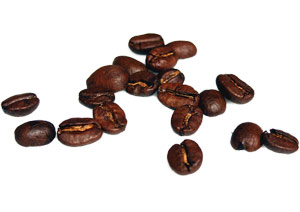
What do you need to know before investing in coffee?
Let's first take a few moments to get to know the coffee market and how it works. To do this, let's start by looking at world coffee production.
This production is mainly carried out in about fifty countries that have the particularity of having a tropical or subtropical climate that is essential for its cultivation. These countries are all geographically located around what is commonly called the "coffee belt". Among the countries that produce the most coffee are Brazil, Vietnam and Colombia. However, there are also several varieties of coffee that can be grown at higher or lower altitudes. Indeed, we know that the cultures in high altitude are generally located near the equator in countries like Colombia or Ethiopia. As for the lower altitude crops, they are mainly found in areas with specific dry and wet seasons such as Mexico or Brazil.
To know the coffee market well, it is also interesting to know the different varieties of coffee. There are two main types of coffee: Arabica and Robusta. The Arabica coffee is considered as the tastiest and most premium bean. It is therefore more expensive. Robusta coffee is more bitter but contains more caffeine. These different varieties are interesting to know because traders who speculate on these coffees will implement different strategies depending on whether they invest in Arabica or Robusta, the price of Arabica being more stable and Robusta more volatile.
Invest in coffee (CFD)!{etoroCFDrisk}% of retail CFD accounts lose money - etoro.com
How is the price of coffee quoted on the stock market?
On which markets is the price of coffee quoted?
Coffee is quoted on several markets around the world, the most important of which are :
1. New York Stock Exchange (ICE Futures US)
- The most liquid market for Arabica coffee.
- Standard futures contract of 37,500 pounds.
- Two types of Arabica coffee: Robusta and Arabica.
2. London Stock Exchange (ICE Futures Europe)
- Second most liquid market for Arabica coffee.
- Standard 5-tonne futures contract.
- Focuses on European Arabica coffee.
3. São Paulo Stock Exchange (BM&FBovespa)
- Major market for Robusta coffee.
- Standard futures contract of 60 bags of 60 kg.
- Focuses on Brazilian Robusta coffee.
4. Euronext futures market (Euronext Liffe)
- European market for Arabica and Robusta coffee.
- Standard 5-tonne futures contract.
- Offers an alternative to the London and New York markets.
5. Nairobi Stock Exchange (NSE)
- Regional market for Kenyan Arabica coffee.
- Standard futures contract for 50 x 90 kg bags.
- Offers an opportunity to trade Kenyan coffee.
What has been the recent trend in the price of coffee on the stock exchange?
Here is a table showing the price of coffee over the last 10 years:
| Year |
Average coffee price (USD/tonne) |
Change from previous year |
| 2014 |
2 000 |
-9.1% |
| 2015 |
1 800 |
-10.0% |
| 2016 |
1 700 |
-5.6% |
| 2017 |
1 900 |
+11.8% |
| 2018 |
2 100 |
+10.5% |
| 2019 |
2 300 |
+9.5% |
| 2020 |
2 000 |
-13.0% |
| 2021 |
2 200 |
+10.0% |
| 2022 |
2 500 |
+13.6% |
| 2023 |
2 450 |
-2.0% |
How do you analyse the price of coffee before investing?
Coffee price analysis requires two methods of analysis: fundamental analysis and technical analysis. It is important to carry out both before trading and investing in coffee!
Fundamental analysis of the coffee price live:
Among the analysis methods that you must know and master to study the price of coffee live, there is the fundamental analysis. This analysis is based on the factors and external elements that can influence the price of this commodity.
In the case of coffee, the focus here will be on the climatic conditions in producing countries. Indeed, coffee crops are very sensitive to climate change. Thus, a period of extreme cold can drastically reduce coffee production and thus lead to a lower supply, which will in turn affect the price of coffee.
Another interesting element to analyze here is the cost of coffee distribution. It is known that transporting coffee from producing countries to consuming countries requires a lot of fuel. As a result, the price of oil can also have an impact on the price of coffee, and when the price of oil is high, this is likely to lead to a rise in the price of coffee.
Similarly, attention should be paid to geopolitical elements. We know that when a producing country is in a fragile political context, this can cause disruptions in the supply chains and therefore cause volatility on the market. Here again, a drop in production can have consequences on the price of this raw material.
Another less obvious but interesting element in the analysis of coffee prices is the health sector. There is increasing debate about the health effects of coffee, which may lead to a reduction in consumption and thus a significant reduction in demand in the long term.
Finally, as with many other commodities, it will be interesting to monitor the value of the US dollar. Indeed, since coffee is quoted in this currency, variations in it can make it more or less interesting to buy depending on the exchange rate with the importer's currency. Generally, a high dollar will slow down purchases, while a low dollar will increase their value.
As we have just seen, fundamental analysis uses various economic and environmental indicators. But for this fundamental analysis to be valid, you must also carry out a complete and coherent technical analysis of this stock in parallel, using for example volatility indicators, trend indicators or reversal indicators. Indeed, it is only by comparing the signals obtained through fundamental analysis with those obtained through technical analysis that you will understand how the price of this stock may evolve.
How do I perform a technical analysis of the coffee price?
Technical analysis is a method of analysing financial markets by studying price charts to identify trends and market indicators. It can be used to analyse the price of coffee and determine investment opportunities.
Here are the steps to perform a technical analysis of the coffee price:
- Choose a price chart: First, it is important to select a price chart that represents the price of coffee over a given time period. It is important to choose an appropriate time period for the analysis, depending on the desired investment horizon.
- Identify trends: Technical analysis starts with identifying trends on the price chart. Trends can be bullish, bearish or sideways. Investors can use technical indicators such as moving averages to identify trends and support and resistance levels.
- Use technical indicators: Commonly used technical indicators for technical analysis of coffee include moving averages, MACD and RSI.
- Interpret the signals: Once trends, support and resistance levels and technical indicators have been identified, it is important to interpret them to determine investment opportunities.
Invest in coffee (CFD)!{etoroCFDrisk}% of retail CFD accounts lose money - etoro.com
How to invest in coffee in the stock market?
Investing in coffee is quite popular with investors looking to diversify their portfolio and take advantage of the global demand for coffee. There are several options for investing in coffee on the stock market, including coffee futures, shares in coffee roasting and distribution companies, exchange traded funds (ETFs) and CFDs.
One of the most common ways to invest in coffee is to buy coffee futures. Coffee futures allow investors to buy or sell coffee at a pre-determined price for a future maturity date. Coffee futures are traded on commodity exchanges such as the ICE Futures US or the NYMEX in New York. However, coffee futures are complex financial instruments that carry high risks, such as rapid price movements and potentially large losses.
Investors can also invest in shares of coffee roasting and distribution companies. Large coffee companies such as Starbucks, JDE Peet's and Nestlé are publicly traded and offer investors exposure to the coffee market. Investors need to understand the company's business, financial situation and potential risks before investing in shares.
Coffee exchange-traded funds (ETFs) are another option for investing in the commodity. Coffee ETFs are a collection of stocks of coffee roasting and distribution companies or coffee futures contracts. Investors can buy coffee ETFs on stock exchanges like stocks. ETFs offer a simpler alternative for investors wishing to invest in the coffee market, as they allow for diversification across multiple stocks and companies.
Finally, coffee CFDs are financial instruments that allow investors to trade up or down on coffee price movements. CFDs are offered by many online brokers and are generally more accessible than futures contracts. However, CFDs also carry significant risks, particularly in terms of leverage, which can lead to potentially large losses.


